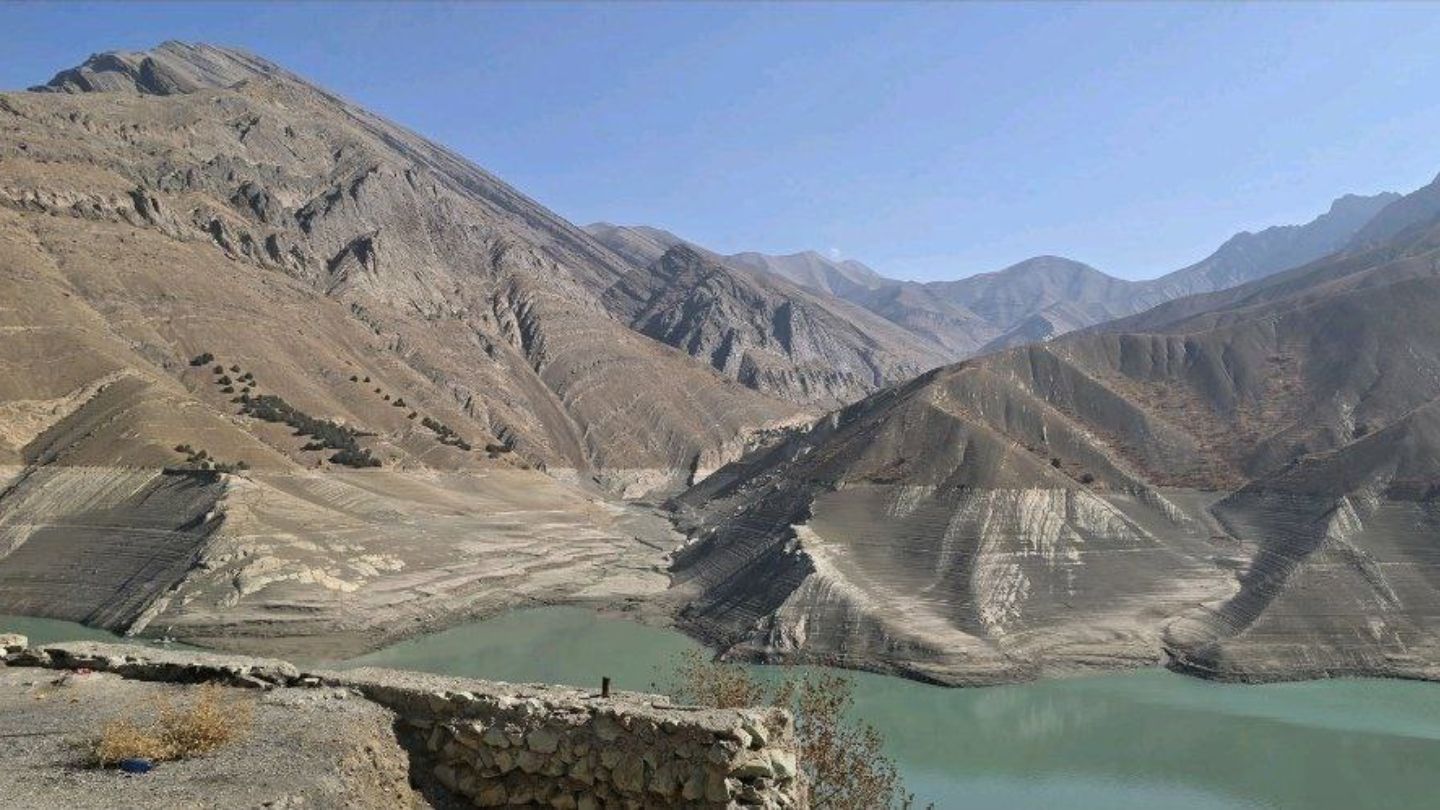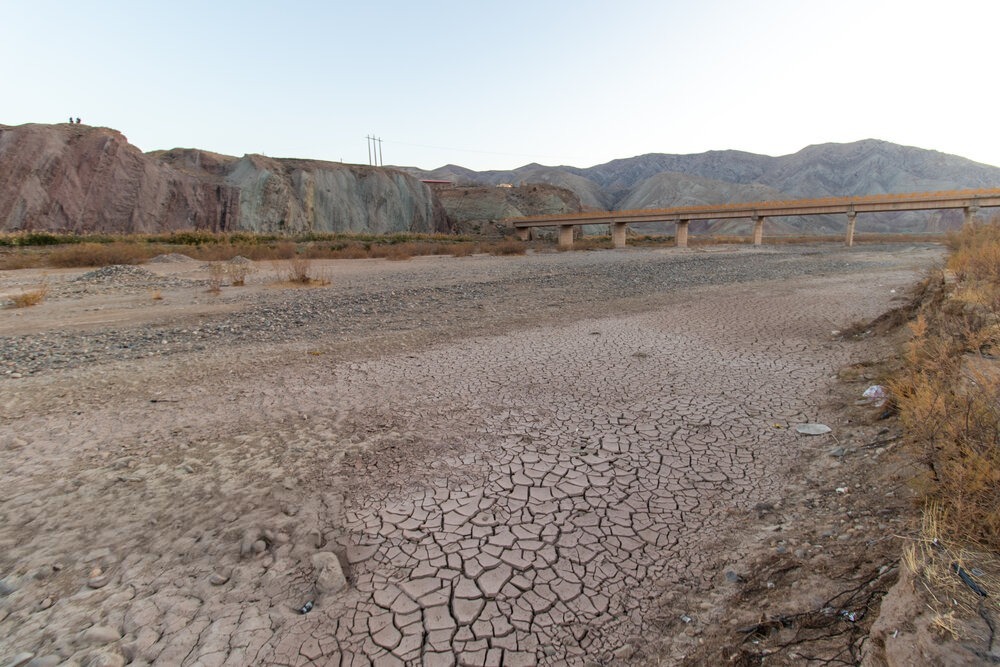Day zero approaches Tehran as water reserves drop below 5%

Tehran will face water rationing from December if rainfall does not arrive, with the possibility of evacuating the capital if drought conditions persist, President Masoud Pezeshkian warned on November 6 to startled audiences.
Pezeshkian made the worrying comments during a speech in Sanandaj, far west of Tehran, stating that without rain, water rationing would begin in December and "evacuation might become necessary" if conditions worsen.
The heart surgeon's comments have sparked widespread panic across the country, suggesting that the current situation with Tehran's water resources has evolved beyond short-term crisis management and entered a phase of fundamental state panic. That impending disaster, coupled with toxic levels of air pollution in recent weeks due to the annual inversion effect, has made the winter of 2025-26 probably one of the toughest the country has faced since former Iraqi leader Saddam Hussein's invasion in the 1980s.

Finger pointing
The man responsible for the city's water, Mohsen Ardakani, deputy for protection and operations of the Tehran Regional Water Company, confirmed Pezeshkian's worried statements, noting that the capital is experiencing its fifth consecutive year of drought. This five-year continuity is unprecedented in the 60-year statistical records of Tehran's water resources, he noted, but failed to attribute it to climate change and global warming.
He said quite belatedly that all efforts by the Ministry of Energy in recent years are aimed at preventing an absolute water crisis. Still, efforts are now focused on ensuring the country does not reach day zero, the day when the water supply across the city of 12mn people runs dry. If that day arrives within the next month, it could potentially upend the country's power structure, as there is no backup capital city ready to take over.
The nearest and most water secure city would be the lush northern commune of Rasht on the Caspian coast. Still, that city's infrastructure would not be able to contend with millions of drought refugees from the former capital. In a sense, the entire political system would likely buckle if no long-term, sustainable solution is sought quickly.
Attempting to bat away criticism of his organisation, Ardakani pointed journalists towards the operation of the second line of water transfer from nearby Taleghan to Tehran. Ardakani said the line has become operational with a capacity of five cubic metres per second and has been added to the capital's water reserves. "Tehran's water need is about 40 cubic metres per second, and this new line only supplies one-eighth of the total need," he said, according to Eghtesad Online on November 6.
He said that previously, only 2.5 cubic metres per second was supplied from the first Taleghan line, and about 16 cubic metres from groundwater sources. Despite this, there is still an imbalance of four to five cubic metres in supplying the capital's water, which is currently being temporarily managed.
Reluctantly, the official stated that the country has entered its sixth consecutive dry year, and since the beginning of the 2025 water year, not even a single drop of rain has fallen.
"Whilst in the same period last year 20 millimetres and in the long-term average 30 millimetres of rainfall were recorded," he said. He added that in the capital's water supply network, there is an imbalance of 4,000-5,000 litres, but with public cooperation and consumption management, this situation can be controlled.

Water levels collapsing
Official statistics from Tehran and its surrounding Alborz (Karaj) regional water companies indicate that the situation with the capital's water resources and the surrounding areas has reached critical levels. The five dams of Amir Kabir, Lar, Latyan, Mamloo and Taleghan are the primary sources of drinking and agricultural water supply for Tehran. The average water occupancy percentage is only 11% of the total capacity of these dams. This figure shows a sharp 42% decrease in reserve volume compared to the same period last year. Without considering Taleghan, the occupancy percentage drops to just 5%.
Karaj Dam, one of the most crucial water supply sources for Karaj and part of Tehran, faces an emergency situation. The manager of Karaj Water Affairs issued a direct warning that, according to current consumption rates, the Karaj Dam reserves will last only 15 more days. The dam's total capacity is 180mn cubic metres, whilst current water reserves stand at just 31mn cubic metres. Daily withdrawal is six cubic metres per second, whilst water inflow to the dam is only two cubic metres per second.
Lar Dam, located on the southern slopes of Damavand, now has only 14mn cubic metres of water, with an occupancy rate that has fallen to 1.5%. Last year at this time, this figure was 3%. Meanwhile, in the west of the province, Amir Kabir Dam (Karaj), considered one of the most important sources of drinking water supply for Tehran, now has only 13mn cubic metres of water and is 7% full, whilst last year its occupancy rate was 44%.
Official estimates put Tehran's reservoirs at less than 5% capacity, threatening water supplies for the city's 15mn residents. Neighbourhoods including Azgol, Yousef Abad, Niavaran, Jordan and Gisha will enter a semi-crisis situation within two to three weeks, with some areas potentially receiving water for only two to three hours per day.
Mamloo Dam, located on the Jajroud River approximately 45 kilometres east of Tehran became operational in 2007, has a catchment area of 1,750 square kilometres and an average annual water flow of 283.8mn cubic metres. Currently, around 17mn cubic metres of water is stored behind Mamloo Dam out of a total reservoir capacity of 250mn cubic metres. At the same time last year, the dam's water reserves stood at 34mn cubic metres.
Comparison of this figure with current reserves shows the dam's situation is even worse than the previous dry year, with water reserves at half the level of the same time last year. Currently, 8% of Mamloo Dam's reservoir capacity is filled with water, whilst 92% of the dam's reservoir is empty.

Political fallout increasing
Political analyst Hamed Pak Tinat, writing in Asr Iran, questioned the feasibility of evacuating Tehran, the Middle East's largest metropolis, noting that relocating 15mn people would require a 25-year project with at least $25bn in infrastructure preparation.
Iran's water crisis stems from decades of policies where 90% of water consumption goes to agriculture, with 60% of that wasted. More than 600 dams have been built, cutting rivers and drying wetlands, whilst 22% of Tehran's drinking water is lost through deteriorated pipes.
Issa Bozorgzadeh, spokesman for Iran's water industry, criticised Tehran municipality for not cooperating with water conservation efforts, stating that the capital's behaviour does not resemble a city facing a water crisis, Ensaf News reported on November 7.
Bozorgzadeh said that several months ago, a group of water experts met with President Pezeshkian. After describing the situation, the president ordered that the lawns at the presidential institution no longer be irrigated. "When we visited a few days ago, the presidential lawns had dried up," he said.
He added that, unfortunately, Tehran residents have not felt this sensitivity because the municipality has not cooperated. "I'm not saying environmental advertising isn't important, but what matters is the feeling that the city's behaviour eliminates. When a citizen sees decorative fountains on and half the street is also wet, they don't feel water shortage," he said.
Bozorgzadeh said the water industry had requested several times that lawns not be irrigated with drinking water. "If you water lawns, use wastewater. If you water your lawn, avoid doing it at noon. If you water lawns at noon, don't let the whole street get flooded," he said.
"Unfortunately, Tehran's behaviour does not resemble a city without water and in crisis. We expect the municipality and Tehran City Council to address water management and conservation issues and have serious, effective activity," he said.
Unlock premium news, Start your free trial today.
.jpg)

